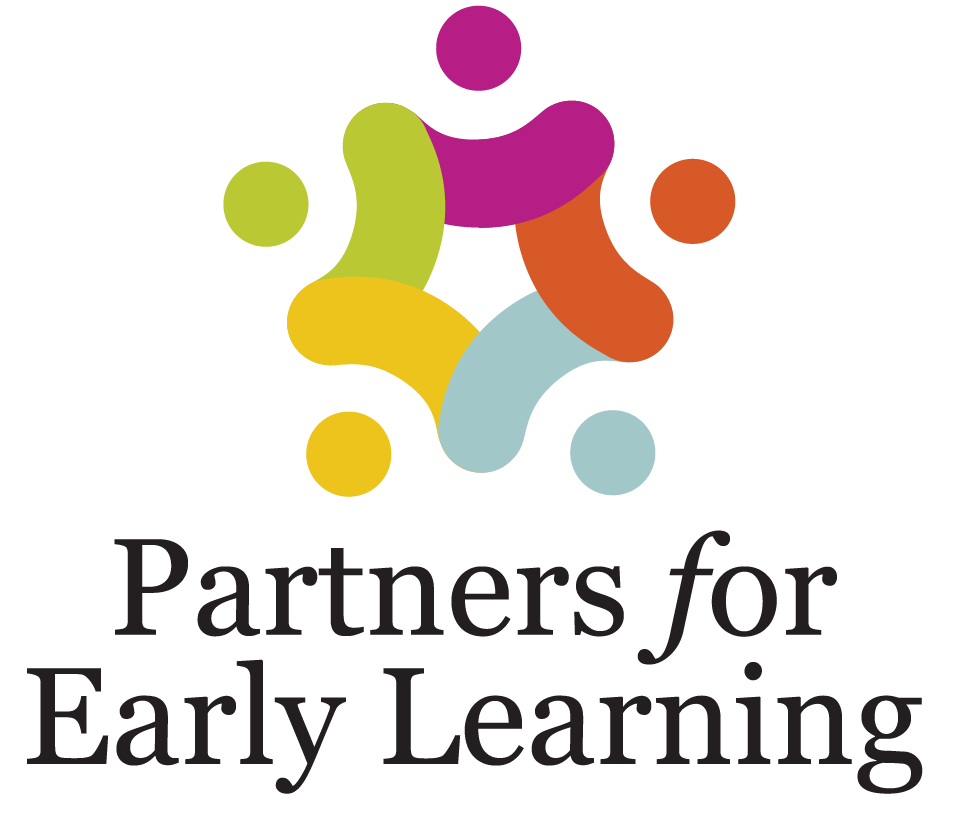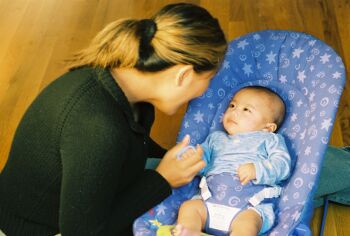Is that babbling and cooing designed to make us melt?
The house is quiet. The baby has gone down for her nap. Finally, you’ve got a chance to catch up on the chores. But what’s that you hear over the baby monitor? Is that your little girl talking? She’s only eight months old! You always knew she was remarkable.
You hurry to her room and quietly open the door. There she is, alright, lying in her crib, happily chattering
away. “Bababababa. Dadadadada,” she burbles, catching sight of you. “Eeeee!”
Alright, so they’re not her first words. What are they?
Sometime around seven to eight months of age, infants start to babble. These consonant-vowel combinations, like “ba,” often include facial expressions, such as smiles or frowns. Babbling is your infant’s way of playing with sounds and language (Gopnik, Meltzoff, & Kuhl, 1999). They are learning to use their lips, tongues, mouths, and jaws to make sounds before they make words.
Repeat after me
Think about your own attempts to imitate another language. If you hear a Spanish speaker say “Gracias,” you may pick up the rolling “r” sound, but do you know immediately how to make the sound yourself? It takes a bit of practice to get your tongue in the right position. Think of a baby trying to learn how to speak for the first time.
How does an infant learn how to make the sounds he hears? Perhaps by babbling and copying the grown-ups around him.
Scientists think babies’ babbling isn’t simply random sounds strung together in an unbearably cute fashion. But rather, babies are learning how to move their lips, tongues, mouths, and jaws to make the sounds they hear you make (Gopnik, et al., 1999).
Babies have a powerful ability to learn the language (or languages) they hear, and adults are very well-suited to help babies learn. The special way we speak to babies, such as getting up close, drawing out our vowel sounds, and pitching our voices high, seems to be just what infants want and need when it comes to sorting out the sounds of speech (Gopnik, et al., 1999).
Creating a sound map
By the time an infant is six months old, the average American baby has heard hundreds of thousands of examples of the vowel sound “ee,” as in “daddy,” “mommy,” and “baby.” Researchers think that from these thousands of examples, babies develop a sound map in their brains that helps them hear the “ee” sound.
In a way, babies create perfect examples of speech sounds in their heads, with a type of target area around each sound. With their sound map for “ee,” for example, babies learn to pick out the “ee” distinctly from the other sounds they hear. Sounds close to the “ee” sound may be in the “target area” around the perfect example, and the baby still hears them as an “ee.”
These perfect examples of speech sounds, called “prototypes,” have a profound effect on how babies hear speech and how they babble. They help “tune” the child’s brain for the language around him so that he can hear the different speech sounds. Even when adults don’t speak clearly, babies compare the mumbled sounds in grown-ups’ speech against the prototypes in their brains and figure out what they’re saying.
By the time they’re six months old, babies who hear the sounds of their culture’s language have developed a set of speech sound prototypes they can use as building blocks when they begin to put together their own words, usually sometime around 12 months (Kuhl, Williams, Lacerda, Stevens and Lindblom, 1992).
They’re sounds, and they’re exciting
Be careful what you say because babies love to imitate the sounds they hear adults make. This is why babies worldwide seem to babble using the sounds of their families’ language. In one research study, three- to five-month-old babies watched and listened to films of an adult making vowel sounds. With only 15 minutes of exposure (over three days, five minutes at a time), even some of the youngest babies tried to imitate the adult speech, making similar, if not perfect, copies of the sounds they heard (Kuhl & Meltzoff, 1996).
Even at these very young ages, babies may be developing what scientists call a “mouth-to-sound map,” figuring out that different sounds are made by moving their lips, tongues, mouths, and jaws differently.
And babies aren’t just using their listening skills to figure out language. They also seem to use something similar to lip reading. Scientists have discovered that babies would rather look at the face of a person who is saying the vowel sound the babies are hearing than see a face and sound that don’t match (Kuhl & Meltzoff, 1982).
What babies who are learning about speech need is someone to talk to. And that someone is you!
When they babble, babble back!
There’s nothing quite as endearing as a happily babbling baby. And knowing that these sounds may be helping your baby put together the building blocks of speech is an added bonus. But to grow from babbling to meaningful speech, your baby needs a good teacher. So when he babbles, babble back. But don’t limit your conversation with your baby to cooing and babbling. Talk to your baby as much as you can. You are teaching him the sounds of words and connecting with him simultaneously.
Helpful parenting tips
- Talk to your little one early, and talk to her often. Get up close so she can see how your lips move. Babies are wonderful copycats.
- Use “parentese.” It’s a way of drawing out your vowels and changing the tone of your voice from high to low, like “Hello, baaaabeeeee!”
- Don’t be afraid to repeat yourself over and over again. Favorite songs, nursery rhymes, and the words to favorite books give children lots of practice hearing the sounds of the language.
- When she babbles, don’t be embarrassed to babble right back. Babies learn early to take turns with you in making sounds. Think of these as conversations!
Enjoy these early conversations with your baby. At first, you may not be able to understand his brand of babble, but the words will come soon enough. In the meantime, get up close, and let your baby see and hear how it’s done.

